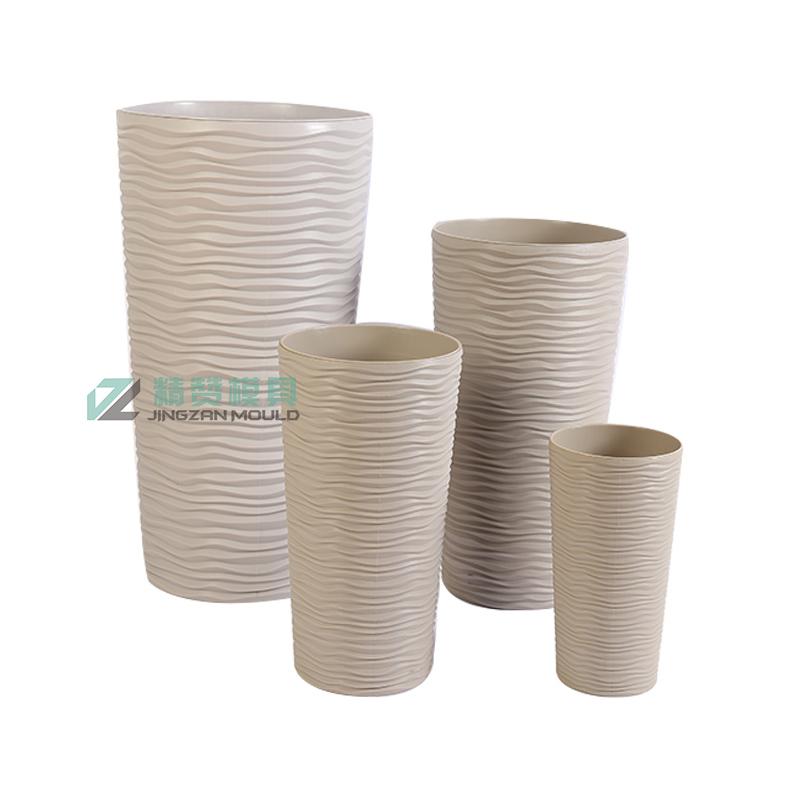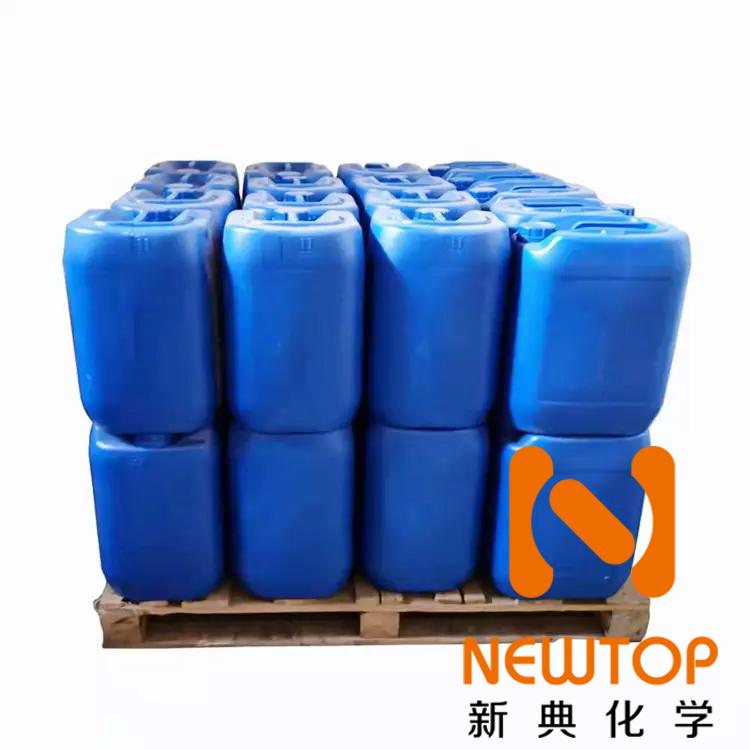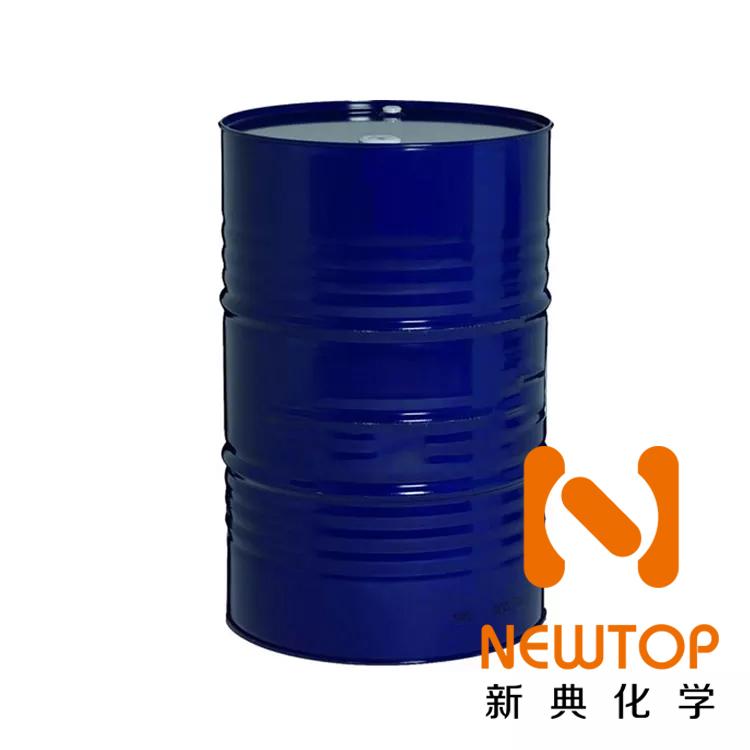CAS: 90-72-2 2,4,6-Tris(dimethylaminomethyl)phenol Production Process and Method
Brief introduction.
2,4,6-tris(dimethylaminomethyl)phenol, an organic chemical substance, molecular formula: C15H27N3O.
Chinese name: 2,4,6-tris(dimethylaminomethyl)phenol
Foreign name: 2,4,6-Tris(dimethylaminomethyl)phenol
English alias: 2,4,6-tris[(dimethylamino)methyl]phenol
Alias: Epoxy accelerator DMP-30; Tris(dimethylaminomethyl)phenol
Appearance: transparent liquid
Chemical formula: C15H27N3O
Molecular weight: 271.4314
CAS No.: 90-72-2
EINECS number: 202-013-9
Boiling point: 320.50 ℃
Density: 1.054 g/cm³
Flash point: 116.63 ℃
Refractive index: 1.517
Epoxy resin curing accelerator DMP-30 is 2,4,6 tris(dimethylaminomethyl)phenol, which is a tertiary amine curing agent. It can be used as an epoxy resin curing agent at room temperature, and also as an efficient accelerator for acid anhydride, polyvinylamine and aliphatic polyamine curing agents.
This product contains phenolic hydroxyl group in its molecular structure, so the activity is increased and it can be used for fast curing, mainly for thermosetting epoxy resin curing agent and adhesive, and it can be used as accelerator of acid anhydride curing agent and amide curing agent for casting and pressure layer products, the amount of this product as curing agent is generally about 3-13%, and the amount as accelerator is generally 0.1-3%. This product can be used as a catalyst in rubber anti-ozone agent and rigid polyurethane foam raw material combination polyether.
Production process.
2000L reaction kettle, 200kg of phenol, 720kg of dimethylamine, 520kg of formaldehyde added dropwise below 50 degrees.
kg, after drop addition, raise the temperature to 70 degrees, keep warm for 2 hours, lower the temperature to 50 degrees, add 100 kg of sodium chloride
Sodium chloride, stir, let stand, stratify, and dehydrate the crude product under pressure.
Method of preparation.
After the reaction of phenol with dimethylamine and formaldehyde, the reaction products are stratified, dehydrated under vacuum and filtered to obtain the finished product.
Theoretical unit consumption: (one ton of product)
Phenol: 400 kg
Dimethylamine (40% aqueous solution) 1440kg
Formaldehyde (37% aqueous solution) 1040kg
Produce waste water about 1.8 tons, mainly containing a small amount of formaldehyde
Dosage:
As accelerator dosage is about 1~5%
As a curing agent dosage of about 10%
Application areas.
Use one
Used as curing agent for thermosetting epoxy resin, adhesive, binder for laminate material and flooring, acid neutralizer and catalyst in polyurethane production
Application 2
Used as antioxidant, also used in dye preparation
Application 3
Used as curing agent for thermosetting epoxy resin, adhesive, sealant for laminate materials and flooring, acid neutralizer and catalyst in polyurethane production.
Numbering system.
CAS No.: 90-72-2
MDL No.: MFCD00008330
EINECS No.: 202-013-9
RTECS No.: SN3500000
BRN No.: 795751
PubChem No.: 24900319
Safety information.
Package Class: III
Hazard Class: 8
Customs Code: 29222900
Dangerous Goods Transport Code: UN 2735 8/PG 3
WGK Germany: 1
Hazardous category code: R22; R36/38
Safety instructions: S26-S28-S2
RTECS number: SN3500000
Dangerous Goods Marking: Xn
Safety terminology.
S26 - Immediately after inadvertent contact with eyes, flush with plenty of water and seek medical advice.
S28 - Immediately after inadvertent contact with skin, flush with plenty of soapy water.
S2 - Avoid contact with children.
S61 - Avoid release into the environment. Refer to special instructions/safety data sheet.
S45 - In case of accident or discomfort, seek immediate medical attention (if possible, show its label).
S36/37/39 - Wear appropriate protective clothing, gloves and goggles or mask.
Storage and transportation.
Should be kept sealed and stored in a dry, cool and ventilated warehouse
Packaging.
200KG/drum Storage: It is recommended to store in dry and cool area with proper ventilation. After the original packaging, please fasten the lid as soon as possible to prevent the mixing of other substances such as moisture to affect the performance of the product. Do not inhale dust and avoid skin and mucous membrane contact. Smoking, eating and drinking are prohibited in the workplace. After work, shower and change clothes. Store contaminated clothes separately and wash them before use. Maintain good hygiene habits.
https://www.newtopchem.com/archives/39733CAS: 90-72-2 2,4,6-Tris(dimethylaminomethyl)phenol Production Process and Method
Brief introduction.
2,4,6-tris(dimethylaminomethyl)phenol, an organic chemical substance, molecular formula: C15H27N3O.
Chinese name: 2,4,6-tris(dimethylaminomethyl)phenol
Foreign name: 2,4,6-Tris(dimethylaminomethyl)phenol
English alias: 2,4,6-tris[(dimethylamino)methyl]phenol
Alias: Epoxy accelerator DMP-30; Tris(dimethylaminomethyl)phenol
Appearance: transparent liquid
Chemical formula: C15H27N3O
Molecular weight: 271.4314
CAS No.: 90-72-2
EINECS number: 202-013-9
Boiling point: 320.50 ℃
Density: 1.054 g/cm³
Flash point: 116.63 ℃
Refractive index: 1.517
Epoxy resin curing accelerator DMP-30 is 2,4,6 tris(dimethylaminomethyl)phenol, which is a tertiary amine curing agent. It can be used as an epoxy resin curing agent at room temperature, and also as an efficient accelerator for acid anhydride, polyvinylamine and aliphatic polyamine curing agents.
This product contains phenolic hydroxyl group in its molecular structure, so the activity is increased and it can be used for fast curing, mainly for thermosetting epoxy resin curing agent and adhesive, and it can be used as accelerator of acid anhydride curing agent and amide curing agent for casting and pressure layer products, the amount of this product as curing agent is generally about 3-13%, and the amount as accelerator is generally 0.1-3%. This product can be used as a catalyst in rubber anti-ozone agent and rigid polyurethane foam raw material combination polyether.
Production process.
2000L reaction kettle, 200kg of phenol, 720kg of dimethylamine, 520kg of formaldehyde added dropwise below 50 degrees.
kg, after drop addition, raise the temperature to 70 degrees, keep warm for 2 hours, lower the temperature to 50 degrees, add 100 kg of sodium chloride
Sodium chloride, stir, let stand, stratify, and dehydrate the crude product under pressure.
Method of preparation.
After the reaction of phenol with dimethylamine and formaldehyde, the reaction products are stratified, dehydrated under vacuum and filtered to obtain the finished product.
Theoretical unit consumption: (one ton of product)
Phenol: 400 kg
Dimethylamine (40% aqueous solution) 1440kg
Formaldehyde (37% aqueous solution) 1040kg
Produce waste water about 1.8 tons, mainly containing a small amount of formaldehyde
Dosage:
As accelerator dosage is about 1~5%
As a curing agent dosage of about 10%
Application areas.
Use one
Used as curing agent for thermosetting epoxy resin, adhesive, binder for laminate material and flooring, acid neutralizer and catalyst in polyurethane production
Application 2
Used as antioxidant, also used in dye preparation
Application 3
Used as curing agent for thermosetting epoxy resin, adhesive, sealant for laminate materials and flooring, acid neutralizer and catalyst in polyurethane production.
Numbering system.
CAS No.: 90-72-2
MDL No.: MFCD00008330
EINECS No.: 202-013-9
RTECS No.: SN3500000
BRN No.: 795751
PubChem No.: 24900319
Safety information.
Package Class: III
Hazard Class: 8
Customs Code: 29222900
Dangerous Goods Transport Code: UN 2735 8/PG 3
WGK Germany: 1
Hazardous category code: R22; R36/38
Safety instructions: S26-S28-S2
RTECS number: SN3500000
Dangerous Goods Marking: Xn
Safety terminology.
S26 - Immediately after inadvertent contact with eyes, flush with plenty of water and seek medical advice.
S28 - Immediately after inadvertent contact with skin, flush with plenty of soapy water.
S2 - Avoid contact with children.
S61 - Avoid release into the environment. Refer to special instructions/safety data sheet.
S45 - In case of accident or discomfort, seek immediate medical attention (if possible, show its label).
S36/37/39 - Wear appropriate protective clothing, gloves and goggles or mask.
Storage and transportation.
Should be kept sealed and stored in a dry, cool and ventilated warehouse
Packaging.
200KG/drum Storage: It is recommended to store in dry and cool area with proper ventilation. After the original packaging, please fasten the lid as soon as possible to prevent the mixing of other substances such as moisture to affect the performance of the product. Do not inhale dust and avoid skin and mucous membrane contact. Smoking, eating and drinking are prohibited in the workplace. After work, shower and change clothes. Store contaminated clothes separately and wash them before use. Maintain good hygiene habits.
https://www.newtopchem.com/archives/39733




